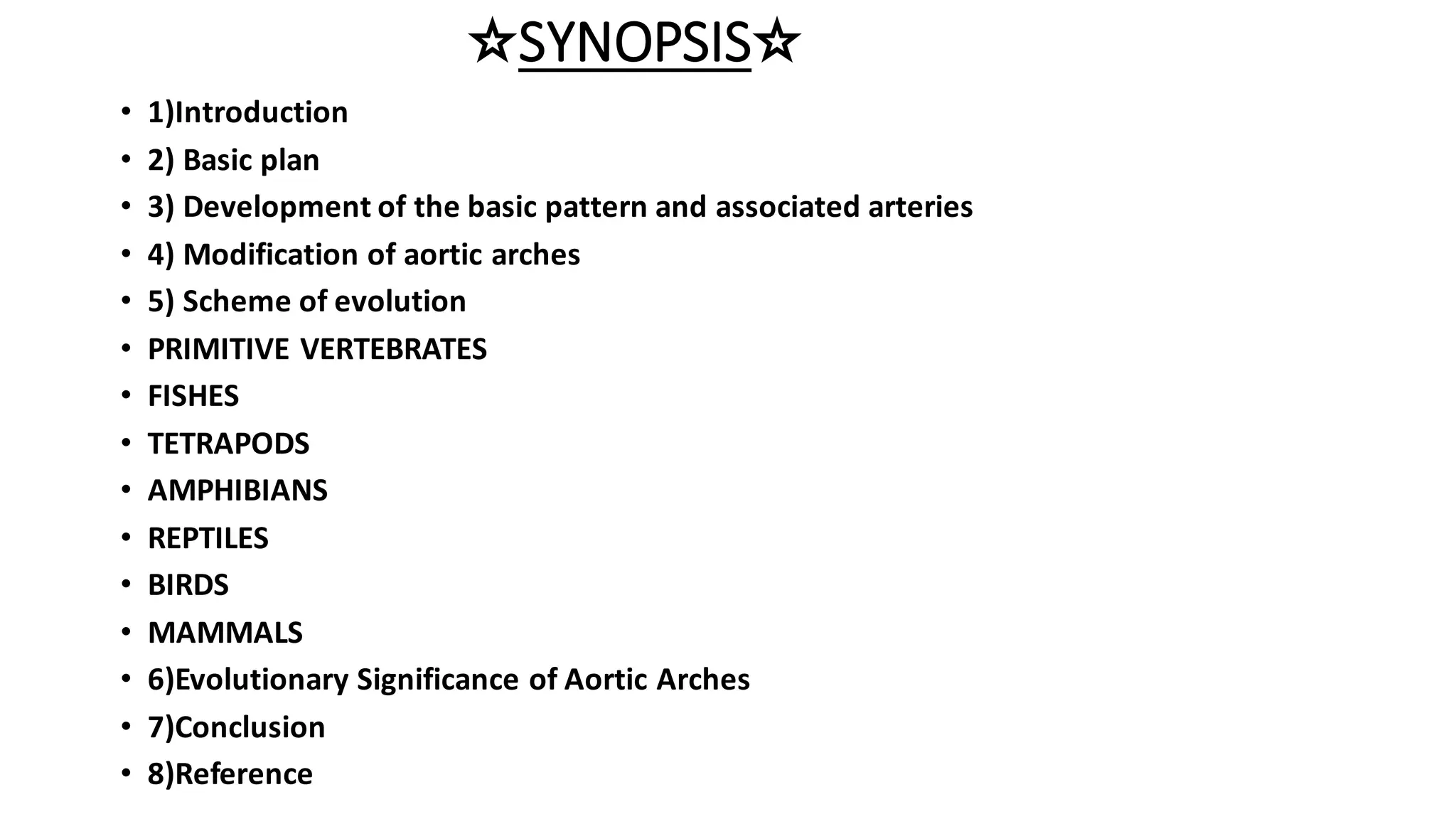The document explores the evolution of aortic arches in vertebrates, detailing their development, modification, and significance through various species, from primitive vertebrates to mammals. Aortic arches serve vital functions in the circulatory system, transitioning from multiple pairs in aquatic organisms to fewer, modified structures in terrestrial animals. The summary highlights how these evolutionary changes reflect adaptations to lifestyle and respiratory needs across different vertebrate groups.



























